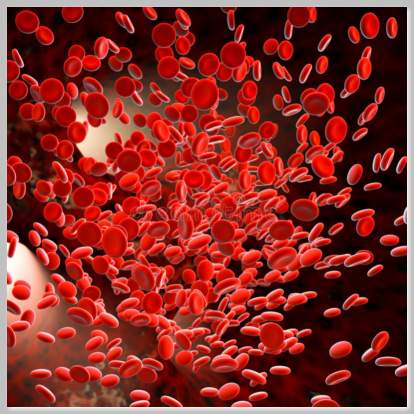

Normal values for MCV can result from coincident microcytic and macrocytic conditions this state can be deduced from a particularly large RDW, as well as from microscopic examination of the peripheral smear. MCV values can be elevated in the setting of brisk reticulocytosis (reticulocytes are larger than mature erythrocytes) or as an artifact resulting from red cell agglutination.

High MCV values are also commonly observed in anemias accompanying myelodysplastic disorders. Common conditions resulting in a hypochromic microcytic anemia (low MCV and MCH) include thalassemia and iron deficiency and, less commonly, anemias associated with chronic inflammatory conditions, genetic determinants for Hb C, congenital defects in copper metabolism, some forms of sideroblastic anemia, and other conditions.Įlevations in MCV are typically observed in B12- or folate-deficient states, and can be observed in hypothyroid states or in liver disease. One common method distinguishes anemias according to cell size (mean corpuscular volume, MCV) and/or amount of intracellular hemoglobin (mean corpuscular hemoglobin, MCH).

Reticulocytopenic anemias can result from nutritional, toxic, infectious, malignant, and/or other conditions and may respond to red cell transfusions, but will commonly require additional, disease-specific therapy.Īnemias can also be categorized using other discriminants. In contrast, anemias resulting from accelerated red cell destruction suggest congenital, immune-mediated, or toxic pathophysiologies that, as a group, will exhibit a less predictable response to red cell transfusion and may require additional disease-specific therapies. For example, hemorrhagic blood loss requires attention to the integrity of anatomic and coagulation systems and is generally responsive to red cell transfusion. Knowledge of the relevant pathophysiology can guide diagnostic and treatment strategies. Some anemias may result from more than one pathophysiology (e.g., gastrointestinal losses and nutritional reticulocytopenia in alcoholics). Inadequate tissue oxygen delivery may be indicated by physical signs (tachycardia, tachypnea) or symptoms (chest pain, deteriorating cognitive function).Īnemias can be categorized into three main pathophysiologies: (1) erythrocyte loss (hemorrhage, third-space bleeds), (2) accelerated erythrocyte destruction (hemolytic anemias), and (3) decreased production (reticulocytopenia). The relative importance of anemia–of any cause–is determined by (1) the extent to which tissue oxygen delivery is compromised, and (2) whether the anemia is deteriorating, stable, or improving. In general, anemias that evolve over a long interval will have a less pronounced clinical impact than anemias that develop acutely. The physiological effect of anemia is a function of: (1) the interval over which the anemia develops, and (2) the overall hemoglobin level. Description of the problem What every clinician needs to know Aplastic anemia myelodysplasia paroxysmal nocturnal hemoglobinuria myeloproliferative disorders (essential thrombocythemia, myelofibrosis, chronic myelogenous anemia) pure red cell aplasia chronic renal failure endocrine-related anemias drug-induced marrow failure (chemotherapy, other) megaloblastic anemias nutritional anemias (including iron deficiency) thalassemia hemoglobinopathies, traumatic blood loss non-immune congenital hemolytic processes (hereditary spherocytosis, hereditary elliptocytosis, hereditary pyropoikilocytosis) congenital enzymopathies non-immune acquired hemolytic disorders immune-mediated hemolysis (autoimmune hemolytic anemia (AIHA), cryopathic immune hemolytic anemia, drug-induced, delayed hemolytic transfusion reactions, ABO-Rh mismatch) sideroblastic anemia anemia of chronic disease myelophthisic anemias hypersplenism hemophagocytic lymphohistiocytosis (HLH) infectious marrow failure syndromes (parvovirus, microbacterium avium intracellulare ) 1.


 0 kommentar(er)
0 kommentar(er)
